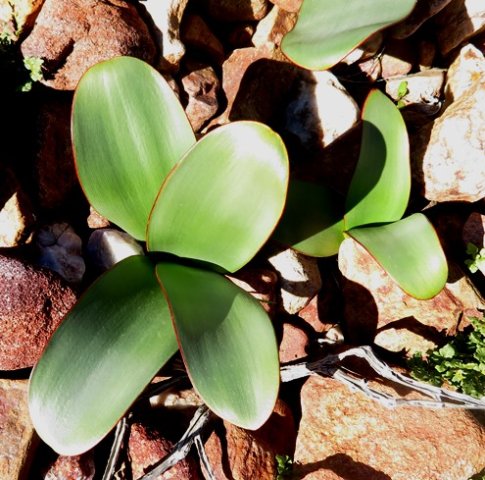Brunsvigia leaves with red margins

Brunsvigia leaves are in general narrowly to broadly tongue-shaped, oblong or ovate. Many of the about 20 Brunsvigia species have leaves that are prostrate, while some grow sub-erect leaf fans. Most of them have flat and smooth leaves, while a few grow wavy leaves or have bristly margins.
The number of leaves grown annually by plants of this genus varies from two to twenty. The leaves are often borne in distichous arrangement, i.e. in two opposite, vertical arrays. Several have leaves only after flowering. All brunsvigias are endemic to southern Africa.
A few of the brunsvigias have red leaf margins like the plants in picture. The photo was taken in August in the veld at Naries, west of Springbok. Only two of the red-margin species occur in this area, viz. Brunsvigia bosmaniae, a common species under no threat and B. herrei, a vulnerable species occurring from southern Namibia to Springbok.
The probability of one plant seen in the veld belonging to the common option must be higher than the more restricted distribution, vulnerable one. So, this is more likely to be B. bosmaniae than B. herrei, the leaf descriptions available not being sufficiently definitive and the plant not seen in bloom.
This is an identification problem when spotting leaves of a bulbous plant in places visited only briefly. Ask a local or return to check the flowers… waiting will be really onerous. At least, it’s down to two although still uncertain!
Other species with broad flat leaves that have red margins but do not occur in this region include B. elandsmontana, B. marginata and B. striata (Duncan, et al, 2016; Leistner, (Ed.), 2000).

